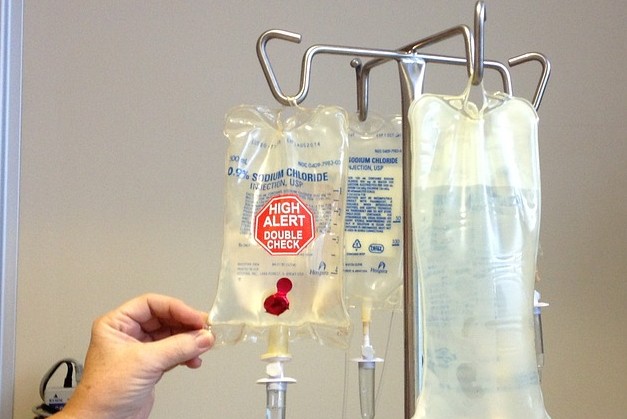Baltimore's Leading Secure Document Shredding Partner with Next-Day Service & Flexible Options – No Contracts, No Hidden Fees - Schedule Now
3 Stages of Medical Waste Disposal

Whether you are just starting out in the healthcare industry or have been doing this for a while, it's important to understand the medical waste removal process. Depending on the size of your organization, it can be rather complex, which leaves plenty of room for error. As a Maryland medical waste removal company, we work with numerous clients helping them comply with all the different regulations related to medical waste removal. And we are here today to help you visualize the entire process from start to finish.
Stage 1: Collection and Segregation
The best practice for medical waste collection is at the point of generation. This approach reduces the risk of the waste spilling on its way from the generation site to the collection container. For example, carrying a bloody gauze from the patient's bed to a waste container at the end of the room may lead to drips along the way, and is therefore impractical. For segregation purposes, biomedical waste is traditionally classified into these 8 categories:
- General waste: paperwork, food waste, packaging materials, etc.
- Radioactive waste: contaminated glassware and other waste from radiotherapy or lab research
- Pharmaceutical waste: unused, expired or contaminated medications
- Sharps: scalpels, needles, scissors, etc.
- Pathological waste: organs, tissues and body parts
- Infectious waste: items capable of transmitting an infection
- Chemical waste: cleaning agents, lab reagents and similar chemicals
- Pressurized containers: cylinders containing pressurized gas
Using the Right Containers
Use of the right collection containers based on the type of waste is crucial. Placing the wrong item in the wrong container may not only hinder safe disposal, but also pose risk of contaminating the environment or infecting your staff or patients. Here are the common medical waste containers and what they are used for:
- Sharps containers are typically red, shatter-proof and close securely to prevent sharps from falling out or puncturing through.
- Biohazard containers are red with a biohazard symbol in the front and are used for infectious and potentially infectious waste such as blood and bodily fluids.
- Trace chemotherapy containers are yellow and are used for a variety of chemical and other types of waste that came in contact with chemo medications.
- RCRA hazardous containers are black and are used for wastes that are classified as hazardous under RCRA, which includes a variety of chemical, pathological, infectious and other wastes.
- Pharmaceutical containers are blue and are used for pharmaceutical waste.
- Radioactive waste containers are yellow and have a radioactive symbol.
Stage 2: Storage and Transportation
Upon segregation, it is determined which waste is being picked up and disposed of through a medical waste removal vendor and which waste is reusable or can be disposed of on site. Whether you are working with a vendor or have an on-site autoclave or incinerator, you will probably need to store your medical waste somewhere until it can be processed in bulk. Storage areas should be chosen carefully and should be inaccessible to the general public. The way containers are transported to and from the storage site is also important, because you don't want to damage them in the process and cause a spill. If you are working with a medical waste removal company, be sure to choose a good one. You are responsible for your medical waste until it's been safely processed, and some unprofessional companies have been caught dumping such waste in places where it doesn't belong.
Stage 3: Treatment and Disposal
There are different ways medical waste can be treated and decontaminated. Incineration is a common approach that can be used on site or off site to both treat and dispose of waste at the same time. However, you can also decontaminate waste with thermal processing (autoclaving), irradiative, chemical or biological (enzyme) treatments. Chemical treatment is often used to decontaminate liquid waste, so that it can be disposed of locally. The rest of the methods can be used to decontaminate waste before it can be land-filled. Have other questions about medical waste removal best practices or regulations? Don't hesitate to get in touch with our team!
Ready to get started?
We offer a variety of competitively priced service options with no contracts or hidden fees. Request a free quote.
Our Dedication to Providing the Highest Quality Regulated Waste Services
is Shown in What Our Clients Say About Our Work
We provide an outstanding value and service to our regulated waste customers and pride ourselves over the last 50 years on our 100% customer satisfaction with 99% customer retention ratio.
Paul R Miller, D.D.S. and Team
ZytoGen Patient Services
Akbar Masood, D.D.S.
Chris Donaldson
Dharani Jasthi
Tomicka Jackson-George, D.M.D.
Louis Sachs, D.D.S.
Kate Blair English
Dave Ryan
Kerry Owens, Avalon Plastic Surgery
Jamie Fleming, National Spine & Pain Centers
Keith Roberts, Biomatrix Specialty Pharmacy
Mireia Pedragosa Marin, Synergy Research
Rebecca Crouse, Randolph Macon Academy
Melissa C, Patriot Chiropractic
Dr. Rosario Ignacio
Dr. Thomas Lutz, Odenton Family Dentistry
Dr. Louis Sachs, DDS
Eric B.
Brenda Shah
Stay connected - Be the first to know!
Get BWS news and promotions straight to your inbox
Don't worry. We won't sell your information!




